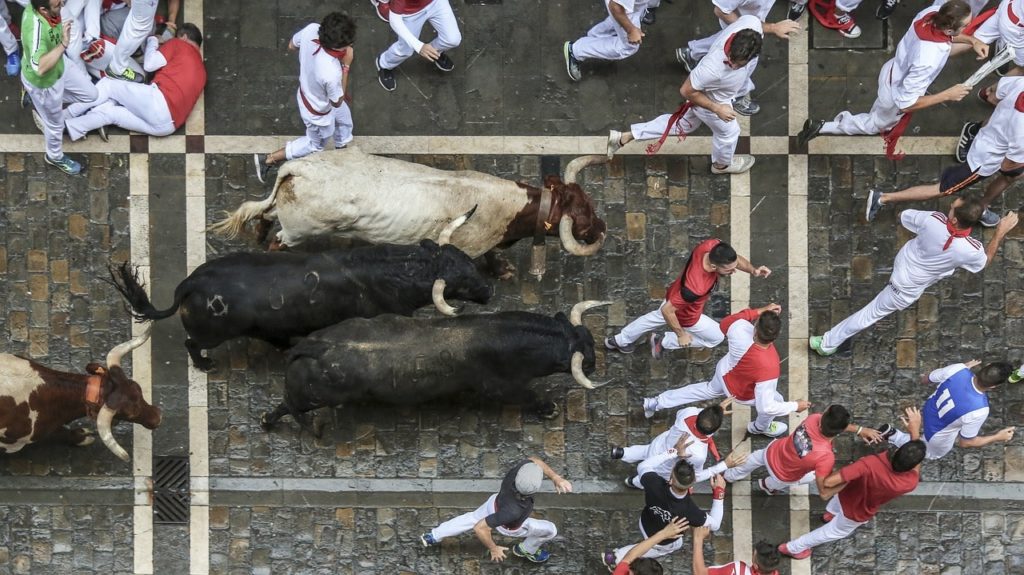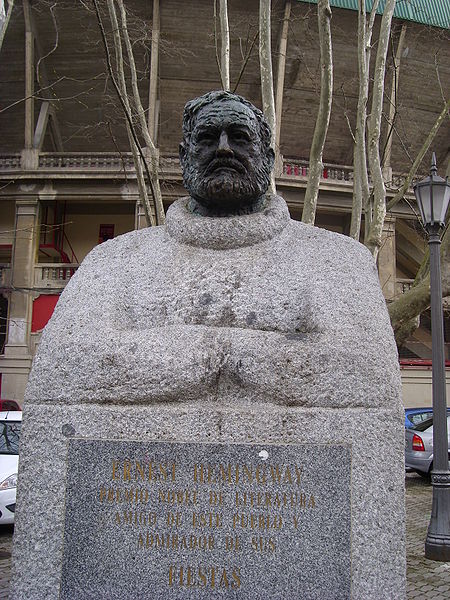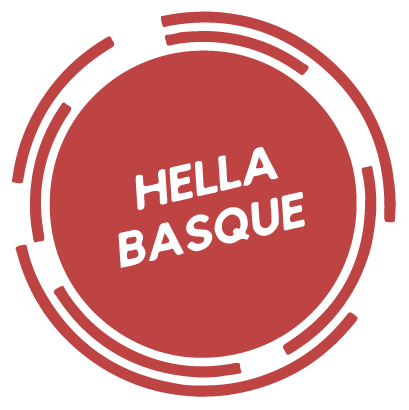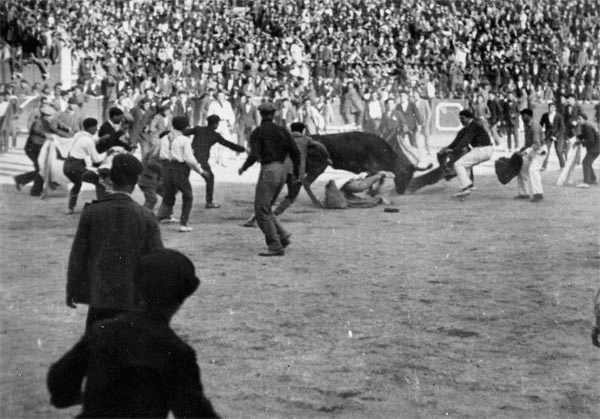This post contains affiliate links, meaning if you click through and make a purchase, I may earn a commission at no additional cost to you.
Festival of San Fermin
The festival of San Fermin in Pamplona, Nafarroa kicked off this past weekend.
Although officially a celebration in honor of Pamplona’s patron saint, the festival is most famous for its Running of the Bulls, when daring festival-goers clad in red and white take to the streets to be chased by bulls.
Every afternoon these same bulls meet their fate in the festival’s famous bullfights at the Plaza de Toros.

The festival of San Fermin has been an annual affair in Pamplona since the 15th century, although the bull run and bullfighting are more modern traditions.
San Fermin was primarily a local affair, relatively unknown outside of the Basque Country. But American writer Ernest Hemingway brought this tradition to the attention and fascination of the outside world in the 1920’s.
Highlights of Festival of San Fermin:
- From July 6-14 every year
- Chupinazo at noon on first day to open the festival
- Bull run and bullfights every day July 7-14
- Procession of San Fermin on the morning of July 7
- Fireworks display nightly at 11PM
- Pobre de Mí sung at midnight on July 14 to close the festival
Ernest Hemingway and San Fermin
The Sun Also Rises
Hemingway visited Pamplona for the festival of San Fermin nine times throughout his life, his first stint being annually between 1923 and 1927. But it was his 1926 debut novel featuring the festival that put San Fermin on the map.
In The Sun Also Rises, Hemingway fictionalizes his own travels through the Basque Country with a group of friends. Hemingway had been mulling over the idea of writing a novel but couldn’t come up with a great premise. He waited for inspiration to strike, and his third annual visit to the festival of San Fermin in July 1925 provided the material he’d been looking for.
The trip was full of drama, drunkenness, hurt feelings, and things left unsaid. After the group’s time at the festival there wasn’t much friendship left between them. Hemingway’s personal relationships were most definitely further damaged once he published this novel full of his friends’ dirty laundry. But the story was too good for Hemingway to keep to himself.
Luckily for us, the most significant setting of The Sun Also Rises is the Basque Country. The first stop on the main character’s itinerary was an ill-fated trout fishing trip in Burguete-Auritz, but the main action in the novel centers around the festival in Pamplona. Hemingway brings his love of bullfighting and San Fermin to life for an audience unaccustomed to such traditions.
With millions of copies sold and a 1957 film adaptation starring Tyrone Power, Ava Gardner, and Errol Flynn, the international popularity of San Fermin grew.
Find out what Ernest Hemingway thought of the film adaptation of The Sun Also Rises.
About The Sun Also Rises:
- Published 1926
- Has been in continuous publication ever since
- Sold 19,000 copies within first 6 months of publication
- Ranked #53 on The Guardian’s Top 100 Best Novels list
Hemingway’s Legacy
Pamplona now draws about 1 million visitors for the festival of San Fermin every year. For a city with a population of 200,000 people, that’s a lot to handle!
Some thank Hemingway for popularizing the festival internationally, while others very much wish he hadn’t. Regardless, the city of Pamplona doesn’t seem to mind: there is a statue of Hemingway outside the Plaza de Toros bullring.

CONTINUE READING:
- Why the Basque Country Has a Statue of Author Ken Follett
- 9 Movies Filmed in the Basque Country
- A Unique Basque Festival: Tamborrada of San Sebastian




Facebook Comments